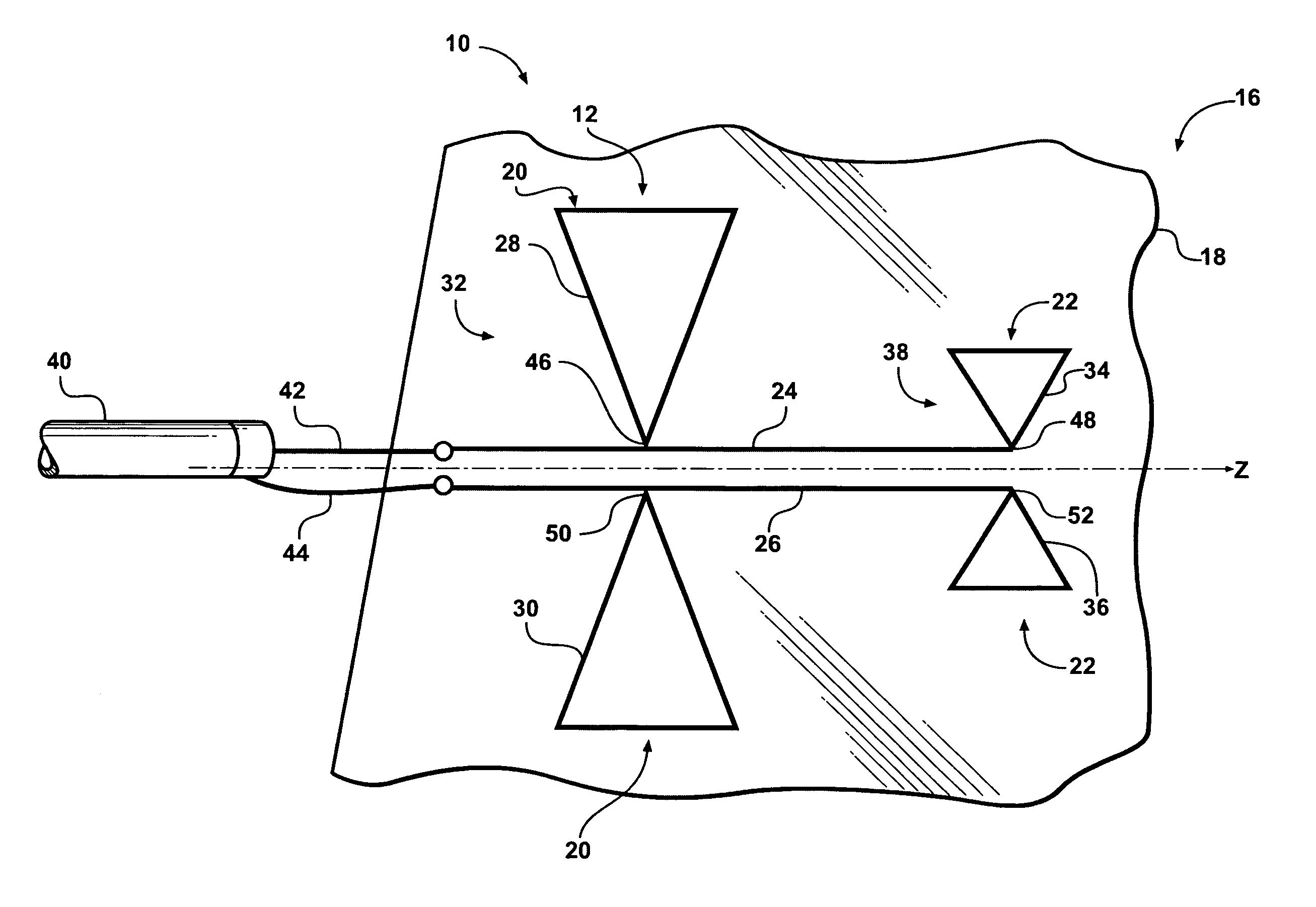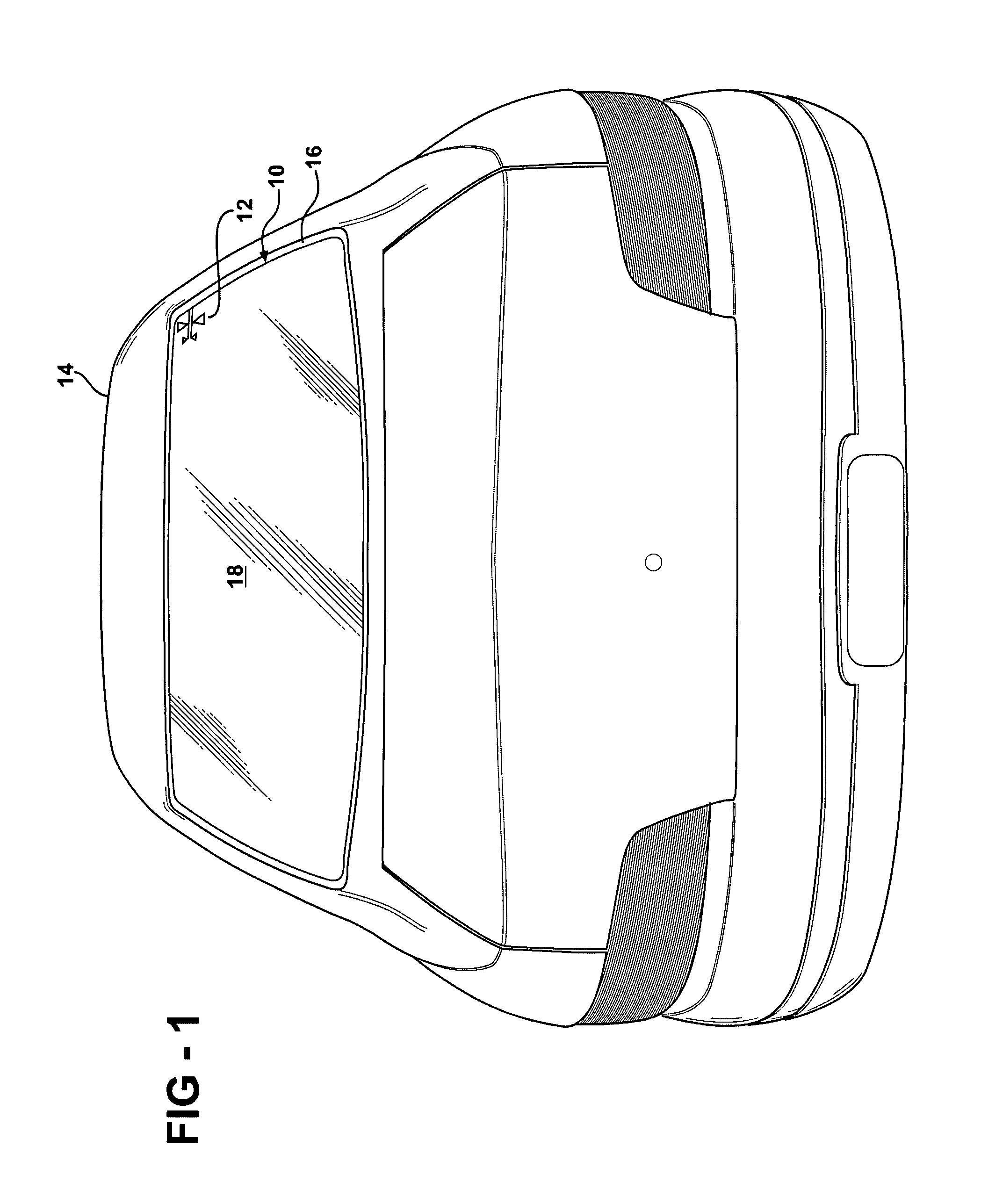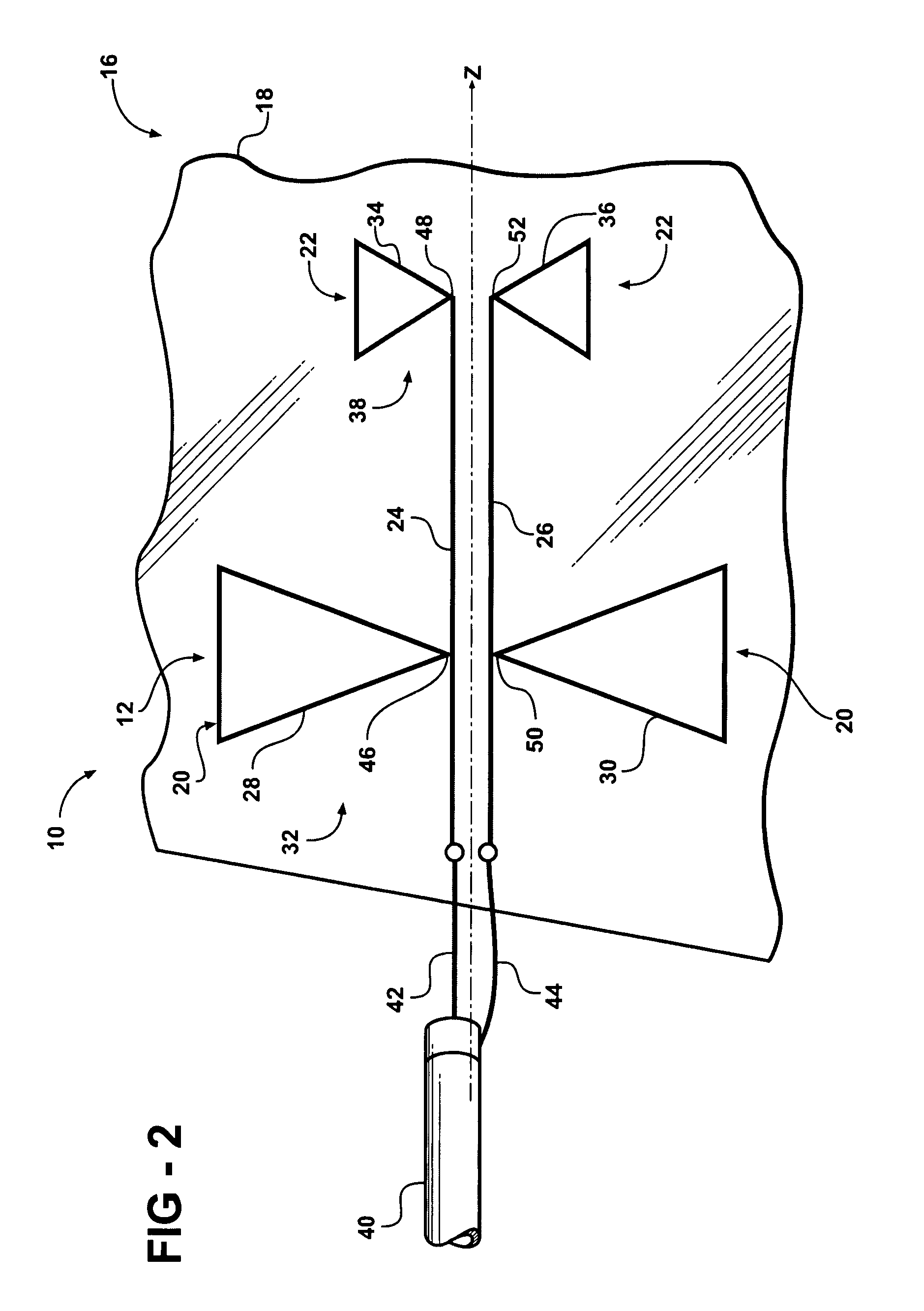Multi-band cellular antenna
- Summary
- Abstract
- Description
- Claims
- Application Information
AI Technical Summary
Benefits of technology
Problems solved by technology
Method used
Image
Examples
Embodiment Construction
[0020]Referring to the Figures, wherein like numerals indicate like parts throughout the several views, a window 10 having an integrated antenna 12 for dual band operation at a first frequency band and a second frequency band is generally shown. This window 10 may be a rear window (backlite) as shown in FIG. 1, a front window (windshield), or any other window of a vehicle 14. The integrated antenna 12, hereinafter simply referred to as the antenna 12, may also be implemented in other situations completely separate from the vehicle 14, such as on a building or integrated with a radio transceiver, as long as the transceiver includes a non-conductive pane 16.
[0021]The window 10 includes the non-conductive pane 16. The term “nonconductive” refers to a material, such as an insulator or dielectric, that when placed between conductors of different potentials, permits only a small or negligible current in phase with the applied voltage to flow through material. Typically, nonconductive mate...
PUM
 Login to View More
Login to View More Abstract
Description
Claims
Application Information
 Login to View More
Login to View More - R&D
- Intellectual Property
- Life Sciences
- Materials
- Tech Scout
- Unparalleled Data Quality
- Higher Quality Content
- 60% Fewer Hallucinations
Browse by: Latest US Patents, China's latest patents, Technical Efficacy Thesaurus, Application Domain, Technology Topic, Popular Technical Reports.
© 2025 PatSnap. All rights reserved.Legal|Privacy policy|Modern Slavery Act Transparency Statement|Sitemap|About US| Contact US: help@patsnap.com



